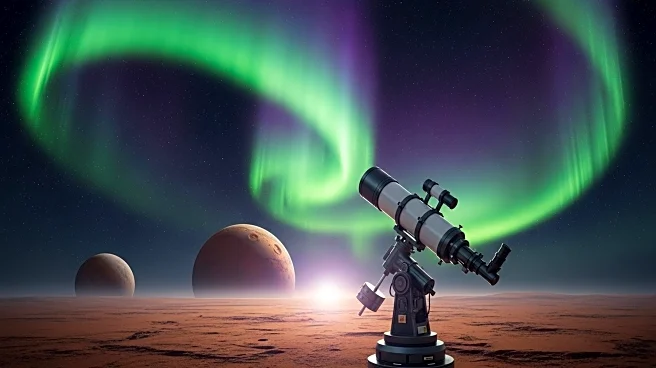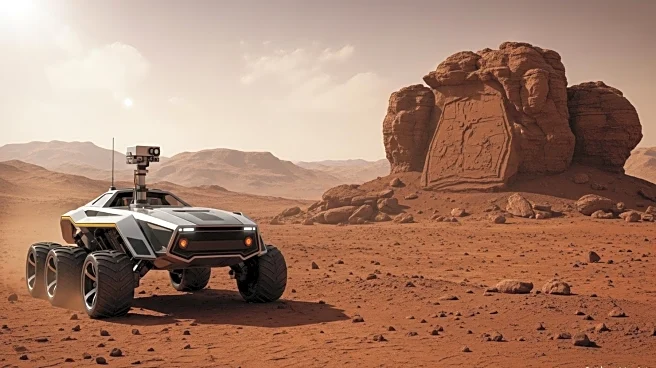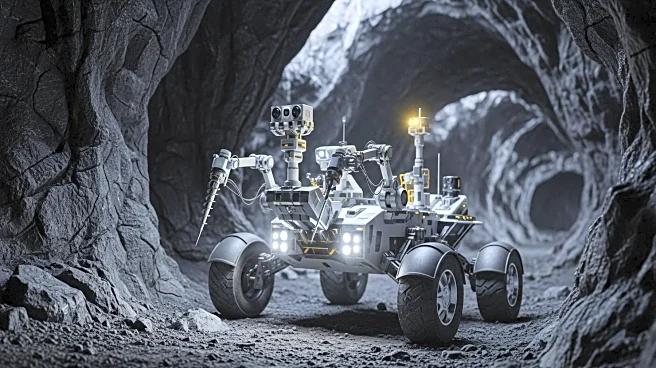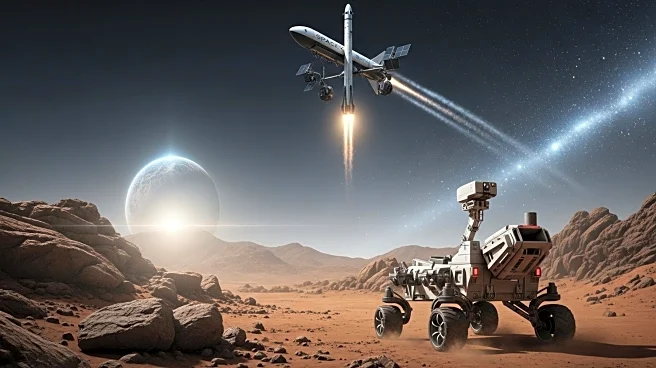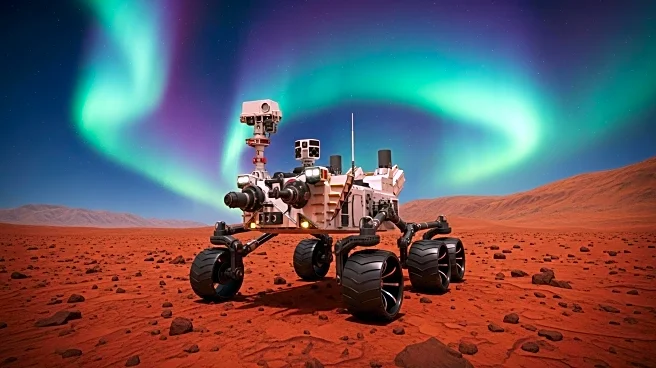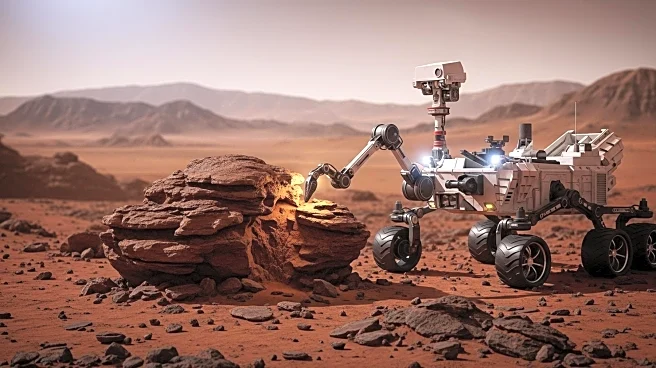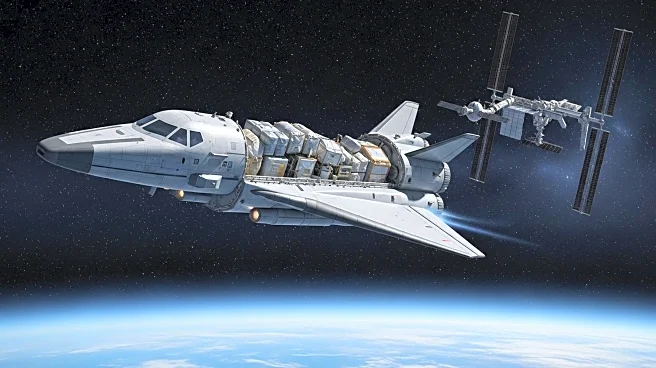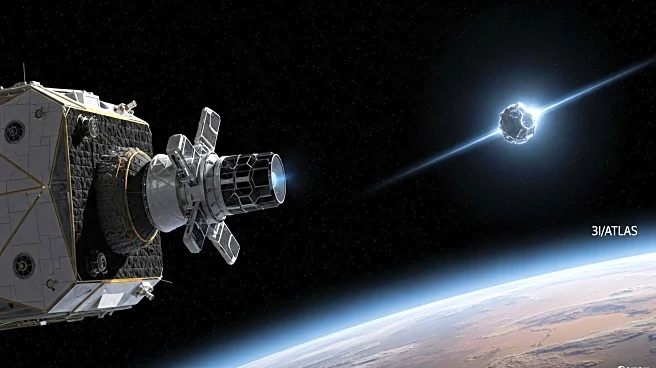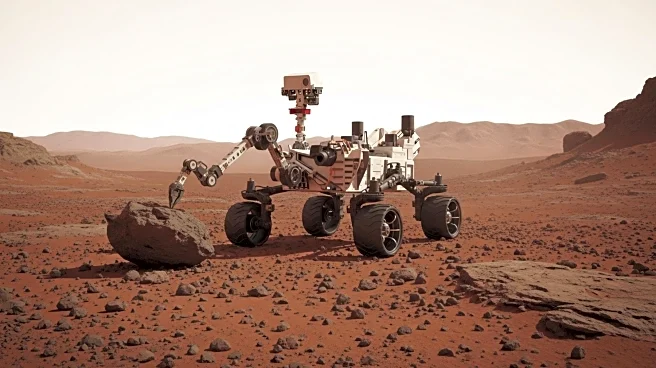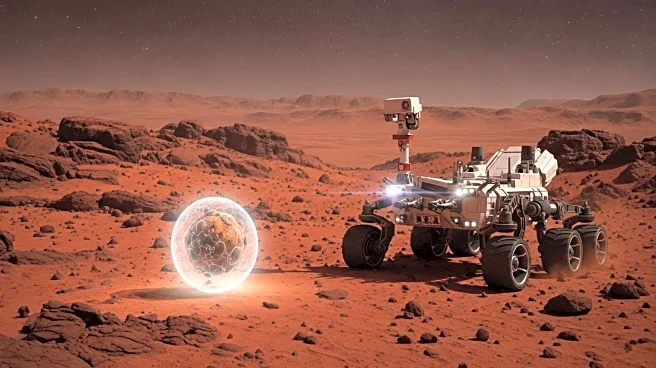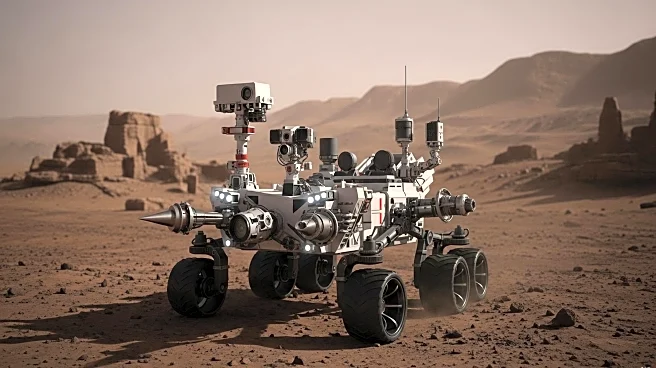What is the story about?
What's Happening?
Scientists have developed a method to predict when auroras will appear on Mars, a breakthrough that could aid future astronaut missions. Unlike Earth, Mars lacks a global magnetic field, allowing solar particles to illuminate the entire nightside sky. The method involves tracking solar eruptions known as coronal mass ejections (CMEs) that can trigger auroras. Elise Knutsen from the University of Oslo reported successful predictions at the Europlanet Science Congress, using NASA's Perseverance rover to capture visible-light auroras on Mars. This advancement provides crucial warnings for astronauts to avoid harmful radiation during solar storms.
Why It's Important?
Predicting Martian auroras is vital for ensuring astronaut safety during future missions to Mars. Solar storms pose significant radiation risks, and timely predictions allow for protective measures. This research enhances our understanding of Martian atmospheric dynamics and contributes to the broader field of space weather forecasting. It also underscores the importance of technological advancements in space exploration, potentially influencing mission planning and resource allocation for Mars expeditions.
What's Next?
Further refinement of the prediction method is necessary to increase accuracy and reliability. Researchers may continue testing the method with Perseverance and other Mars missions, aiming to establish a comprehensive aurora forecasting system. Collaboration with international space agencies could expand the scope of research and improve predictive models. The findings may also inform the design of protective equipment and habitats for astronauts, ensuring safer exploration of Mars.
Beyond the Headlines
The ability to predict auroras on Mars highlights the interconnectedness of planetary science and space exploration. It raises questions about the potential for similar phenomena on other planets and moons, encouraging broader investigations into extraterrestrial atmospheres. The research also reflects the growing importance of interdisciplinary collaboration in advancing space science.
AI Generated Content
Do you find this article useful?
